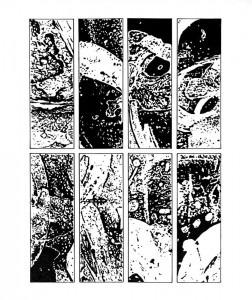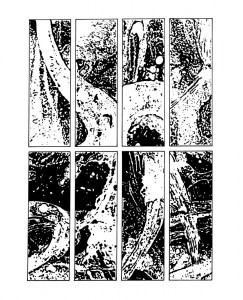Grace Lally
Professor Rojas
English 396
2 March 2016
Though I’m familiar with many of Poe’s works, I was honestly ignorant to the fact that he had written this sea-set story. This book bore a special significance as well, being the only completed novel ever released by the Romantic author. Retrospectively, it doesn’t surprise me that Poe would choose to pen an escapade taking place upon the open ocean. Poe is known historically for his interest in mystery, paranormal phenomenon, and the macabre. His poetry is typically dark and full of unforeseen twists. What better setting than the sea to locate one of his storylines? After all, what place could be more mysterious and unpredictable? It is said that we even know more about outer space than we do the sea floor.
The Narrative of Arthur Gordon Pym of Nantucket was written by Edgar Allen Poe in 1839 and follows the misadventures of young Pym, the inquisitive protagonist. One of the themes most prevalent in the novel and displayed by the nature of the character Pym is the theme of perseverance. Pym and his close friend Augustus Barnard begin the novel by taking out Augustus’ small sailboat the Ariel together, but the two encounter a huge storm and have to be rescued by the bitter leader of a returning whaling expedition. This does not slow down Pym, though, because when Augustus then encourages Pym to stow away on the whaling ship Grampus, he seizes the oppurtunity for further exploration. Augustus was the son of the captain, so the whole affair seemed reasonably innocent at the time. Again, circumstances disintigrate quickly into disorder and the crew stages a mutiny. This leads to a whirlwind of disaster for Pym and his subsequent companion Dirk Peters. They acommplish a counter-mutiny and take control of the boat, but find themselves unable to crew it appropriately. In the period of time where they are waiting to be rescued (eventually by the Jane Guy) they see a Dutch vessel filled with upright corpses, a Poe-esque moment of gloom and despair which would turn back the weaker of heart or stomach. But no, they perservere still, pressing onward on the new boat once reached by it.
This consistent perseverance led to another theme of the novel: the unknown and the unknowable. As Pym ignored more and more signs to return, or, contrarily, overcame more and more opposition, he pushed further into a strange, secretive land. The sparkling allure of this region was tinged by a palpable feeling of peril, or risk. This became more concrete as it eventually presented its own, more fearsome roadblocks. These obstacles included angry natives and a giant, ghostly adversary that appears from the depths of overwhelming fog. These were foes even more difficult to manage than the already treachorous tasks of staging a mutiny and surviving stranded at sea. In my opinion, it represents that there will always be another level of danger presented by the natural world. When humans underestimate Nature’s prowess, this almost always leads to their doom.
I found this comic done by artist Andrei Molotiu, an abstract artist and art historian who teaches at Indiana University. It’s posted twice on his website, once entitled “Pym redrawn” and also “Two of the missing pages from ‘The Narrative of Arthur Gordon Pym'” and features two black and white ink drawings.

The drawings fit the emotion that I felt while reading the final chapters of the novel. Pym’s fate is unknown at the finale; we only know that he is in extreme danger, opposed by an unearthly apparition come to take revenge on the young man’s bravado in this foriegn land. The white-washed world of the South represented an untouched, wild place… A sacred place, even. The subject matter of the comics is not obvious, but the image depicts a convoluted mix of a pitch black background fighting with violently encrouching white. The mix of power and danger is beautifully meshed in these abstract drawings. In my opinion, the mysticism of the untouched coastlines of the Earth is too spirtual to express in realism. The metaphysical essence of abstract art is the perfect medium for such a topic. In a way, I feel that they subtly illustrate the hieroglyphs found by Pym and Peter in the caves of this foreign place: “Shaded,” “White,” and “Region to the South. (Poe).”
Works Cited
Molotiu, Andrei. Pym redrawn. 2008. blotcomics. Web. 2 March 2016.
Poe, Edgar Allan. The Narrative of Arthur Gordon Pym of Nantucket. New York: Hill and Wang, 1960. Print.
Featured image: ”To the Arctic 3D” Copyright © IMAX



I love how you mentioned in the beginning about the mystery of the sea. Wendy Walters also mentioned that when reading her essay, the fascination we have about it, and the reason many people such as Poe have written on it, a way to untangle and explore. It’s a great parallel to how I felt upon finishing this novel like you mentioned, and the images you chose were very interesting… the abstractness that represents the many interpretations we can draw when reading about the sea
“opposed by an unearthly apparition come to take revenge on the young man’s bravado in this foreign land.” is excellently said. I think you could be on to something in reference to Pym’s bravado and some spirit taking revenge. I must reread that section to see what I missed.